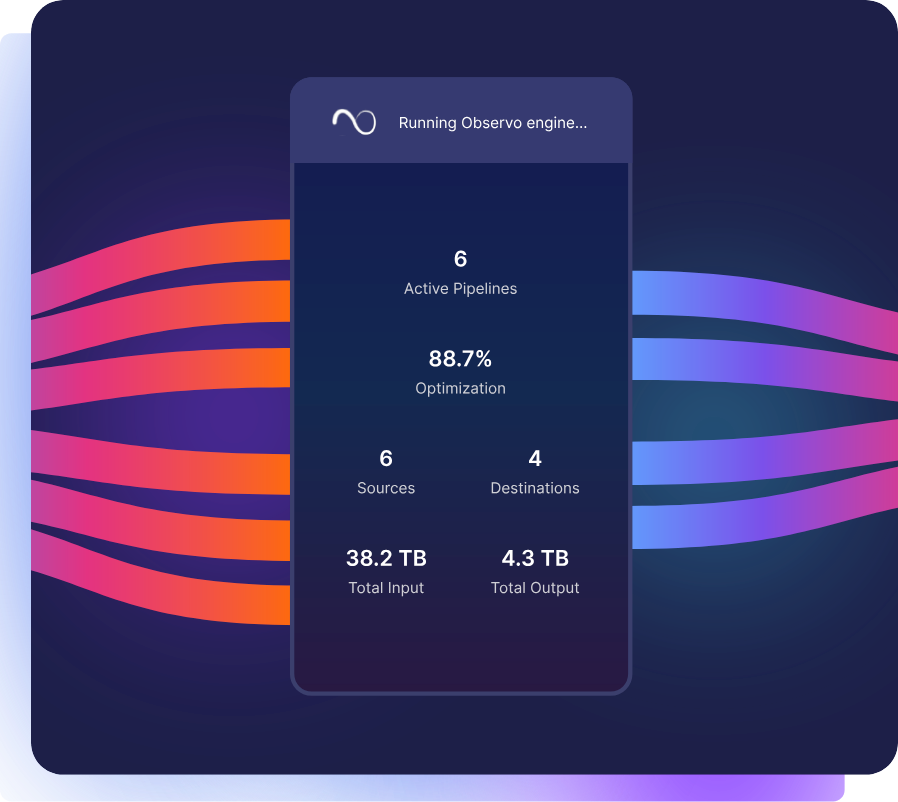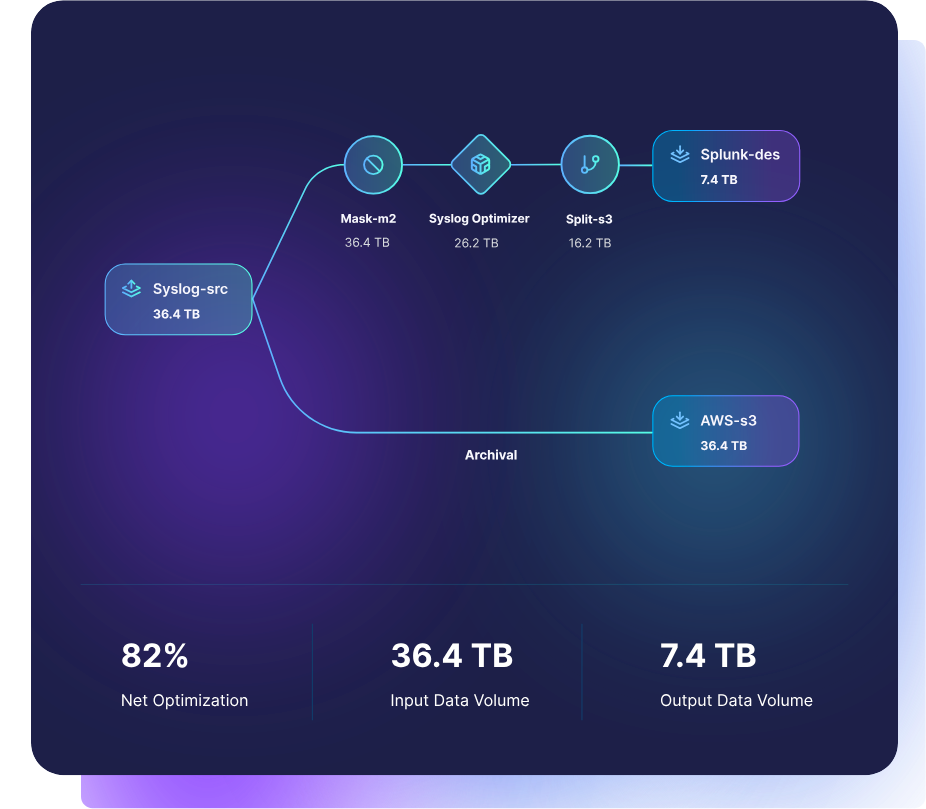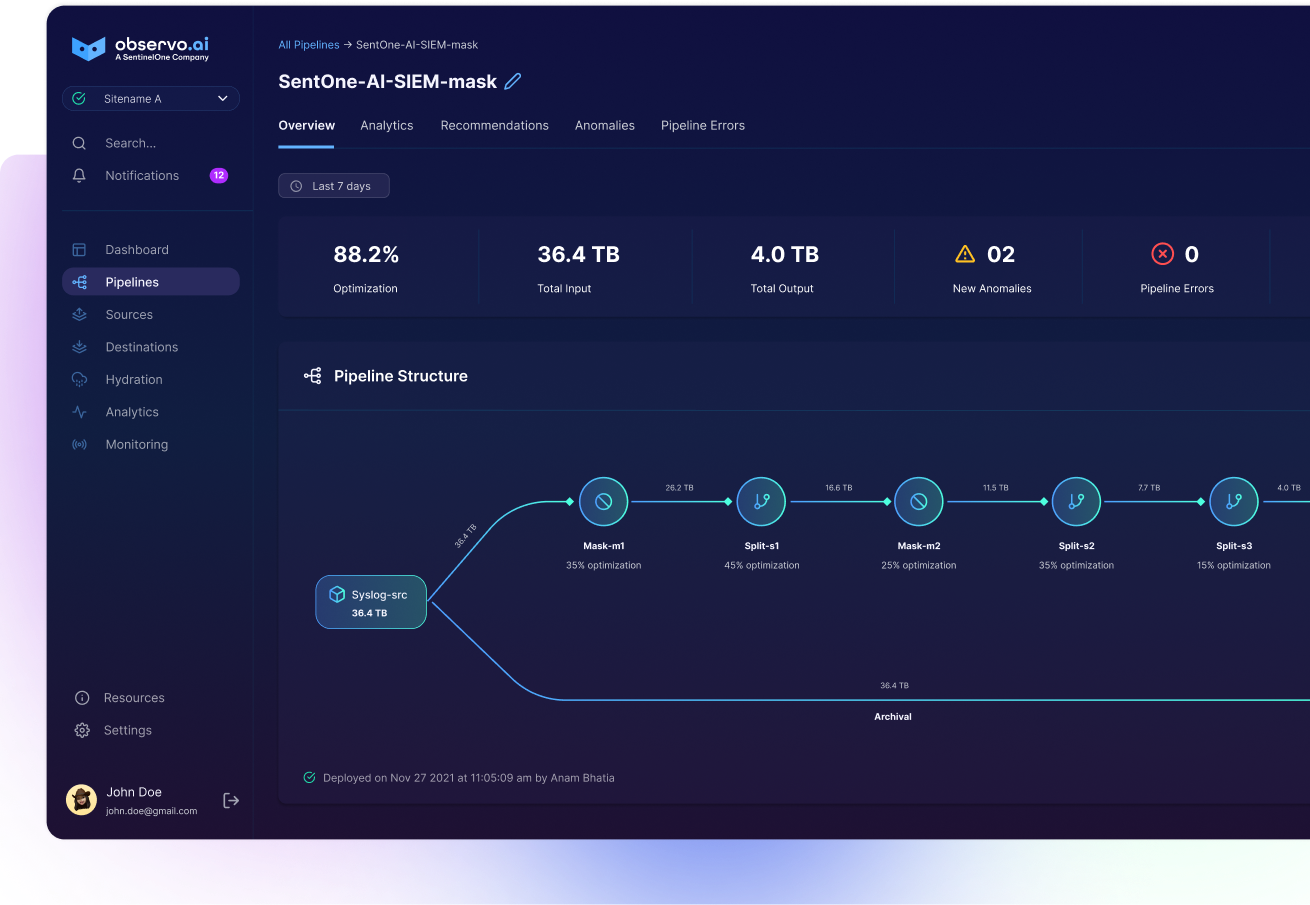How AI-Native Pipelines Reduce 80% of Noisy Data for Lower Costs and Better Security

The Hidden Cost of Noisy Telemetry Data
Security data is exploding. Most organizations see their telemetry volumes double every two to three years, driven by cloud adoption, distributed architectures, and an expanding attack surface. Yet only a small percentage of that data contains real indicators of compromise. Analysts estimate that nearly 80 percent of SIEM and observability logs have little or no analytical value. They are collected out of caution, retained due to compliance pressure, and processed because teams hope that something important might be hiding in the noise.
The problem is that noise is expensive. SIEMs and analytics platforms price and scale based on how much data they ingest and store. When low-value logs flood the pipeline, licensing grows, storage footprints expand, and compute demands increase. Organizations end up paying more every year without gaining better visibility or faster response. The cost curve rises while security signals remain buried under redundant telemetry.
Noisy data also slows critical operations. Every additional gigabyte that enters the SIEM creates more volume to index, search, and correlate. Queries take longer. Investigations drag on. Analysts wait for dashboards and search results instead of actively defending the enterprise. When the majority of data is unhelpful, speed becomes the hidden casualty. Threats do not pause while searches complete.
There is also an opportunity cost. SOC teams must constantly tune ingest filters, prune data sources, or shorten retention windows to stay within budget. That effort steals time away from higher value activities like threat hunting and analysis. Worse, cost pressure often leads to dropping high signal data sources or reducing fidelity, which introduces dangerous blind spots for attackers to exploit.
The equation is simple. When an organization is paying to index, store, and analyze noise, the security function becomes less effective and more expensive at the same time. Reducing the volume of low-value telemetry is not just a budget strategy. It is essential to restoring the speed, visibility, and investigative focus needed to stop threats before they become incidents.
When Noise Crowds Out What Matters
As telemetry grows, SOC teams often face a difficult tradeoff. High-value sources like firewalls, identity platforms, and custom applications provide the earliest indicators of compromise, yet they are among the most expensive to ingest because 90 to 95 percent of their events are routine and low value. Organizations end up sampling or excluding these sources wholesale just to stay within ingest and storage limits. The result is a loss of context and visibility, and adversaries take advantage of those blind spots to move quietly inside the environment.
This pressure also creates inefficiency. Analysts and engineers spend significant time tuning filters, rewriting routing rules, and choosing which logs to collect each day instead of focusing on threat hunting and investigation. Carrying noise forces constant trade-offs and shifts attention away from security outcomes. The more noise that flows into downstream tools, the harder it becomes to detect anomalies when they matter most.
Teams are not reducing sources because they lack value. They are reducing them because noise makes security analysis. Without a better way to minimize low-value telemetry before it reaches the SIEM, organizations are stuck choosing between cost control and effective detection. Neither option supports the level of defense modern threats demand.
How AI-Native Data Pipelines Optimize Data to Cut Costs and Elevate Insights
AI-native pipelines improve security and cost efficiency by transforming data before it ever reaches a SIEM index or any other analytics platform. Instead of ingesting everything and trying to sort it out later, machine learning models identify repetitive, low-value telemetry in motion and route it to low-cost archival. The result is a dramatic reduction in noisy events, lower infrastructure demand, and fewer distractions for analysts who need to focus on what matters.
These pipelines do more than filter. They summarize redundant activity while preserving fidelity, so teams retain the security context required for investigations without paying to index thousands of identical logs. They also continuously learn, adapting to new behaviors and patterns as data evolves, which eliminates manual tuning and keeps pipelines aligned with real-world changes in the environment.
AI enables enrichment at the point of ingestion as well. Telemetry can be enhanced with threat intelligence, GeoIP context, identity attributes, and behavioral signals that reveal risk. With enriched, leaner data feeding correlation engines and detection tools, search performance improves, alerts become more meaningful, and analysts reach insights faster.
By reducing noise and adding context upstream, AI-native data pipelines strengthen every downstream system. They lower SIEM and security TCO, shorten response timelines, and free teams to introduce new high-value sources without overwhelming budgets or ingest capacity. Organizations gain clearer visibility, faster detection, and better use of the security tools they already own.

What Observo AI Delivers
Observo AI delivers the full promise of AI-native data pipelines by reducing noise before it ever reaches the SIEM or analytics platform. Machine learning models identify and filter low-value telemetry in real time, enabling an immediate impact on cost and visibility. Customers routinely eliminate more than 80 percent of unnecessary events without losing the context required to detect threats or investigate incidents.
With less data to ingest and store, total cost of ownership drops significantly. Organizations see up to 50 percent lower SIEM and data platform spending, not through painful tradeoffs or reduced coverage, but by removing the volume that adds no analytical value. High-signal data flows to the tools that need it, while low-risk events can be summarized, routed to low-cost storage, or discarded entirely.
Enriched, leaner indexes also make searches faster. Noise reduction, combined with in-stream enrichment like threat intelligence, anomaly detection, and sentiment analysis accelerates correlation and speeds investigations. Teams report 30 to 50 percent faster queries because they are searching through data that is cleaner, more structured, and more relevant to attack detection.
By transforming telemetry in the stream, Observo AI gives security teams the visibility they expect from their tools while keeping costs under control. This lets organizations expand coverage, onboard new data sources, and move from reactive firefighting to proactive defense with the speed and clarity modern environments require.
Real-World Example: Informatica Reduces Log Volume up to 80% with Observo AI
Customers see the impact of Observo AI within days. Informatica, a global SaaS data management leader processing over 60 terabytes of telemetry per day, reduced noisy cloud and application logs by up to 80 percent while preserving the signal required for detection and investigation. By optimizing data in the stream, Observo AI helped the team regain visibility into high-value signals without exceeding ingest budgets or sacrificing coverage.
By removing low-value events before they reached downstream tools, Informatica also cut cloud infrastructure and pipeline processing costs by more than 20 percent. Their SIEM clusters immediately became faster and more responsive, with faster dashboard loads, quicker searches, and fewer failed queries even as telemetry volume continued to grow.
Scaling visibility became possible again. The team onboarded more than 70 types of application logs without overwhelming the SIEM or creating new operational bottlenecks. With a cleaner data stream and automated parsing, engineers reclaimed valuable time previously spent maintaining brittle pipelines and troubleshooting ingestion issues.
These results are consistent across modern cloud environments. Observo AI enables organizations to remove noise, unlock high-signal insights, and strengthen security performance while reducing the cost to achieve it.
“We looked at multiple solutions, but Observo AI stood out. Not just for the performance and cost savings, but because their team worked closely with us to tune the platform for our needs. Within weeks, they helped us onboard dozens of schemas—streamlining our data by more than 80%.”
Kirti Parida, DevOps Architect, Informatica

Optimize Data for Better Security and Cut TCO in Half
Noisy telemetry slows detection and inflates costs, but it does not have to be the price of visibility. Observo AI helps security teams eliminate low-value data before it reaches the SIEM, enrich the signals that matter, and accelerate every decision that depends on fast, reliable data.
Organizations are reducing data volumes by more than 80 percent, cutting SIEM and cloud TCO in half, and unlocking faster investigations with leaner, high-signal security data.
Find out for yourself. Request a demo with our engineers to learn how your team can reduce noise, improve visibility, and stay ahead of attacks with AI-native data pipelines.




